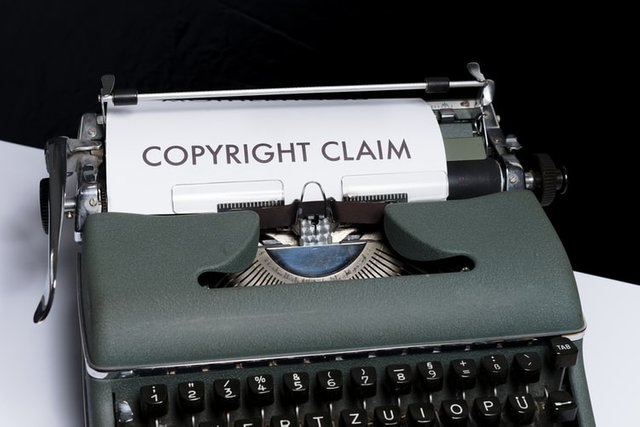
INTRODUCTION TO IPR
Properties are of two types - Tangible (i.e. that can be seen or touched) and Intangible (i.e. Creation of human intellect that cannot be touched).
Intellectual property rights are intangible rights, unlike other personal estate rights, they can't be touched, or seen. For example, a replica of a book may be a personal asset that's easily viewed and identified.
Intellectual property (IP) is creation of human mind, human intellect. Property such as inventions; literary and artistic works; designs; and symbols, names and images used in commerce which most important source of one's economy, labor & efforts, Piracy and illegal copying is the most serious concern of Intellectual Property (IP) protection.
Intellectual property rights (IPR) are the rights given to persons over the creations of their minds. They usually give the creator a prerogative over the utilization of his/her creation for a particular period of your time.
IPR are legal rights which result from intellectual activity in industrial, scientific, literary & artistic fields. Protected IP can be matter of trade, which can be sold or bought or owned.
Intellectual Capital is intangible wealth that helps the organization access to the markets, preserve exclusive markets and maintain the profits. Hence, the organizations today got to preserve these rights through legal framework, so on protect it from infringement or misuse by the competitors.
Intellectual property may be a legal concept that deals with the creations of human ingenuity. Such creations, whether or not they be inventions, designs, trademarks or artistic works, like music, books, films, dances, sculptures or photographs are considered and guarded as property for a particular period of time, provided the creators meet certain criteria, for example, originality, defined by the relevant Laws.
Intellectual property acts as:
- Stimulus to innovations
- Vehicle for technology transfer
- Attraction for financing.
These are intangible and non-exhausted consumption.
Intellectual Property is usually divided into following types as given by World Intellectual Property Organization (WIPO) and Trade related aspect of Intellectual property rights (TRIPs):
• Patents
• Trademark
• Copyright
• Geographical indications
• Trade Secret
• Industrial Designs

1- Patent
A patent is a prerogative granted for an invention. An invention is the creation of Intellect applied to capital and labor to produce something new and useful. It is product or process that provides a new way of doing something or a new technical solution to a problem.
A patent does not give a right to make or use or sell an invention. Rather, a patent provides, from a legal standpoint, the right to exclude others from making, using, selling, offering for sale, or importing the patented invention for the term of the patent, which is usually 20 years from the filing date subject to the payment of maintenance fees.
A patent provides the patent owner i.e. patentee with the right to decide how - or whether - the invention can be used by others. This means that patentee can sell the whole or part of his property (Patent) or he can grant license to use invention on mutually agreed terms.
Once patent expires the protection ends and an invention enters the public domain.
2- Trademark
A trademark is a distinctive sign that identifies goods or services which are provided by specific person or enterprise. It is one or more combination of words, letters and numbers. It consists of drawings, symbols, three dimensional signs such as shape and packaging of goods, audible signs such as music and vocal sound or fragrances or colors. Trademark provides protection to the owner of 'the mark to sell goods and services under this signs or symbols.
Registration of trademark is full proof of its ownership.
Trademark provides 10 years of protection after initial registration and it can be renewed from time to time or transformable.
Example: Coca-Cola symbol and bottle shape, McDonalds golden arch etc.
3- Copyrights
Copyright may be a legal term describing rights given to creators for his or her literary and artistic work. Such as books and other writings, musical compositions, paintings, sculpture, computer programs and films) are protected by copyright.
The primary 'function of a copyright law is to protect the fruits of a man's work, labor, skill or test from being taken away by other people. The period of copyright protection is for the author's life plus an additional period of 60 years after the author's death.
Creator can sell their work to individual or company in return of payment.
4- Geographical Indications (GI)
Geographical Indications are signs used on goods that have specific origin and possess qualities or a reputation. Mostly agricultural products are influenced by specific local factors, such as climate and soil.
A Geographical Indication points to a selected place or region of production that determines characteristic and qualities of product. Place of origin may be village or town, region or country.
5- Trade Secrets
It is confidential business information that provides as enterprise competitive edge. Usually these are manufacturing methods, consumer profiles, advertising strategies, list of suppliers and manufacturing process. Trade secrets are protected without registration. A trade secrete can be protected for an unlimited period of time but if the secrecy must exist.
6- Industrial Designs
Industrial designs ask activity which ends up in ornamental or formal appearance of a product. Industrial designs are key element of IP. The essential purpose of design law is to market and protect the planning element of commercial production. Registration of design is mandatory and grated for 10 years.
Waooh your article is well educated thanks.
Downvoting a post can decrease pending rewards and make it less visible. Common reasons:
Submit
Thanks for your kind words. Always thr to share.
Downvoting a post can decrease pending rewards and make it less visible. Common reasons:
Submit